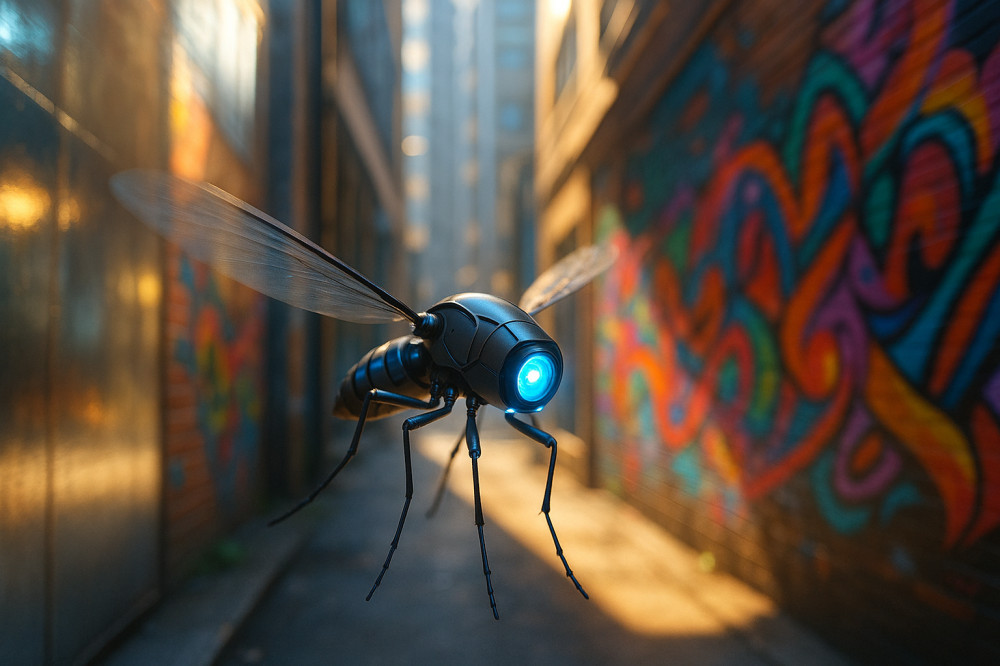 By Admin
Published 1750891609
By Admin
Published 1750891609
What looks like a mosquito… but spies like a secret agent?
Researchers in China have just developed a next-level surveillance drone that mimics a tiny insect—and it might be one of the most covert pieces of technology we’ve ever seen.
In the ever-evolving world of tech and defense, China’s National University of Defense Technology (NUDT) has quietly created something extraordinary—and borderline science fiction: a mosquito-sized drone built for stealthy missions.
Designed for surveillance, intelligence gathering, and tactical reconnaissance, this micro-drone operates like a flying insect, flapping its wings and perching silently. It’s not just small—it’s engineered to disappear in plain sight.
🦟 Built Like a Bug, Powered by Precision
This isn’t your average quadcopter. Shaped to imitate real insects, the drone:
-
Flaps its wings for natural flight
-
Has ultra-thin, flexible legs to perch on surfaces
-
Weighs mere grams, yet carries power systems, sensors, and controls
Its bio-inspired design allows it to blend into crowded environments—urban alleys, foliage, even indoors—where traditional drones would instantly be noticed or blocked by obstacles.
🎯 Why Go This Small?
Because in modern missions, stealth is everything.
In urban warfare or surveillance ops, visibility = vulnerability. That’s why a tiny drone with flapping wings could be the game-changer:
-
🕵️♂️ Spy without being seen: It can fly low, hide on walls, or perch on ceilings
-
🧠 Gather real-time intel: Cameras and sensors relay audio/visual data undetected
-
🚁 Enter hard-to-reach zones: Narrow buildings, tunnels, or crowded rescue zones
Its agility and size make it perfect for search-and-rescue missions, counterterrorism, or even targeted reconnaissance—without putting humans at risk.
🔬 The Tech Challenge: Small But Smart
Shrinking a drone to mosquito size is no small feat. Engineers must miniaturize:
-
Power sources
-
Flight control systems
-
Wireless communication
-
Stabilization software
NUDT’s drone represents breakthroughs in microelectromechanical systems (MEMS) and lightweight materials—a sign of just how far drone tech has come.
⚠️ Ethical Debate Incoming
As with any military innovation, this raises important ethical and privacy questions:
-
How will these drones be regulated?
-
Could they be used for civilian surveillance?
-
Who controls their use—and who gets access to them?
As the line between tech and biology blurs, it’s clear that transparency, policy, and global dialogue must keep pace.
Why This Matters to You
At Dino Code LA, we believe the future belongs to those who understand how tech shapes the real world—not just code, but strategy, society, and innovation. Whether you’re a developer, entrepreneur, or just curious about the next big thing, this kind of breakthrough shows where we’re heading.
This isn’t just a story about a flying bug—it’s a glimpse into the next frontier of AI, robotics, and defense.
Want to stay ahead in the race for the future?
Follow @dinocodela for weekly updates on the latest AI, drone, and innovation news. Visit dinocodela.com for deep dives into the trends shaping tomorrow’s tech.
We don’t just follow the future—we decode it.


